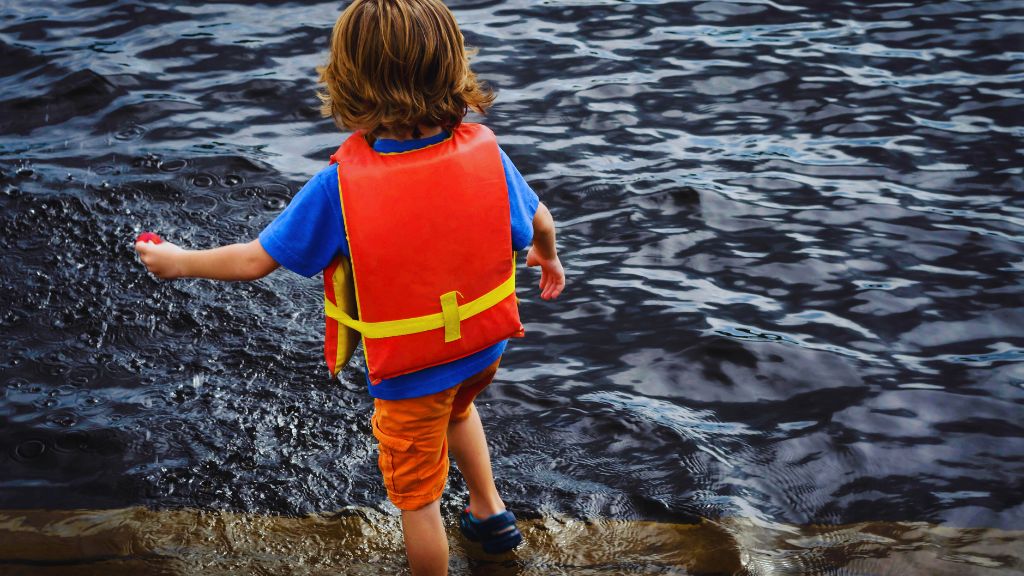Table of Contents
How Can I Keep My Child with Autism Safe Around the Water?
Water is a source of joy for many families. But for parents of children and teenagers with autism spectrum disorder (ASD), it can also be a safety concern. In fact, recent research demonstrated children with ASD are at a much higher risk of injury mortality due to unintentional drowning than their neurotypical peers. These risks and concerns leave some families asking, how can I keep my child with autism safe around the water?
Understanding and addressing the risks associated with autism and the water is crucial to safeguarding the well-being of those with ASD. In some cases, water poses a genuine danger, resulting in fatal tragedies, like the recent passing of a 4-year-old girl in Sutton, Massachusetts, after she was found unresponsive in a neighbor’s pool. This case and others like it demonstrate just how vital water safety skills are to everyone in the autism community.
However, water and swimming can also offer many benefits to those on the autism spectrum. Learning about the water and applying safety skills can make swimming and navigating the waves more accessible and manageable for the ASD population. Many neurodiverse families achieve this with the help of Applied Behavior Analysis or ABA therapy.
ABA principles, including positive reinforcement, help many caregivers of ASD loved ones take proactive measures to ease their worries regarding ASD and the water. ABA also helps promote the learning of suitable safety skills individuals can carry for a lifetime. These essential ABA teachings can help keep kids safe while preventing fewer tragedies from potentially occurring.
This blog by ABA Centers of New Jersey will explore the importance of water safety skills for neurodivergent children and teens. It will also provide ABA and ASD-friendly tips for keeping kids safe while they enjoy the water.
Furthermore, we discuss how ABA therapy can help many children with ASD learn essential life skills by addressing some of the core challenges that can limit them. Doing so ensures kids with autism can feel safe and get help if they need it, wherever and whenever they are, including in the water.
So please keep reading to learn more about water safety for kids with autism and how you can make a splash this summer without compromising your ASD loved one’s well-being!
Click here for more information about ABA Centers of New Jersey. Visit us here to read other blogs about autism, autism safety, and ABA therapy.
The Importance of Water Safety for Children with Autism
According to the Red Cross, drowning is a leading cause of death for children and adults on the autism spectrum. The high risk surrounding drowning and autism can be due in part to challenges those with ASD experience. These struggles can, at times, hinder their ability to understand and follow basic safety rules, including those pertaining to the water and in other circumstances.
Parents and caregivers of ASD children should take a proactive approach to teaching neurodivergent loved ones water safety skills. Learning how to swim with ASD and understanding basic water safety is especially critical if your family lives near a body of water like a pond, river, lake, or pool, where these occurrences are often most likely to happen.
Finally, teaching water safety to those with autism can also foster more independence and confidence in those with ASD, which can help them feel more comfortable and capable in social settings involving water, like pool parties, gatherings with hot tubs, or beach trips.
Understanding the Risks of Children with Autism and the Water
According to a recent study, there is evidence showing that children with autism have a higher risk of injury, especially drowning, compared to the general pediatric population. The study found that boys with autism between ages seven and eight have the highest rates of unintentional fatalities among neurodiverse children. Here are some reasons why:
1. Attraction to Bodies of Water:
Children with autism can sometimes find water attractive because it provides sensory stimulation and a sense of calm. However, they may need help understanding safety rules and recognizing dangerous situations.
2. Elopement Behaviors:
Individuals with autism may engage in wandering behaviors, known as elopement, which can lead them to enter bodies of water unsupervised and unprepared unintentionally.
3. Poor Supervision and Care:
Some children with autism require around-the-clock care, and inadequate supervision can lead to water safety issues.
4. Coordination and Motor Development:
Individuals with autism may struggle with coordination and motor skills, making it challenging for them to swim or tread water effectively.
5. Communication Struggles:
Many with autism have difficulty communicating their needs or seeking help if they encounter trouble in the water.
These factors make individuals with autism particularly vulnerable around water.
ABA Therapy and Learning Safety Skills
ABA therapy can also help children with autism learn essential safety skills. ABA techniques can focus on meeting everyone’s needs and on acquiring skill sets that allow kids to remain safer in the water, such as following rules, communicating effectively, calling for help, and responding appropriately in a crisis.
Through positive reinforcement and productive evidence-based care, ABA therapy can help children with autism develop various skills that serve them beyond their time in the water, ultimately improving their outcomes and helping them reach long-term goals.
6 Caregiver Tips for Keeping ASD Children Safe around Water
- Start Early: Introduce your child to swimming lessons at an early age, ideally between 2-4 years old and with their neurodiversity in mind. Easing them into experiences around water can help them feel more familiar with water and tolerate the experience sooner.
- Use Visual Supports: Visual cues can help children with autism learn and understand safety rules. Create visual schedules or diagrams to describe expectations and appropriate behaviors around water.
- Know Your Child’s Limits: Be aware of your child’s swimming abilities and gradually increase their exposure to deeper waters as they improve. Always respect their boundaries and abilities.
- Practice Water Safety Rules: Consistently review and practice water safety rules with your child, such as always including a swimming buddy, staying within designated swim areas, and looking out for vital safety signs.
- Invest in Swim Aids: Consider using flotation devices or other swim aids to help your child stay afloat while swimming.
- Create a Plan: Develop a safety plan for your child if they do find themselves in trouble while swimming, such as teaching them to signal for help or calling out for assistance.
- Teach Your Child to Identify Authority Figures: Spend time teaching your child to identify authority figures from the public. For example, teach them to identify a lifeguard or a police officer from a beach visitor.
- Enroll in Specialized Swimming Lessons: Look for ASD-friendly swim services that emphasize neurodiversity in teaching water safety and swimming.
- Set Up Clear Barriers and Fences: If your home includes a hot tub or pool, ensure you set up clear parameters and gates with locks to limit any child’s ability to enter the area without you.
By following these tips and considering the benefits of ABA therapy, parents can help their children engage in the water safely and confidently.
Your Neurodiverse Family Can Enjoy Water Safely with ABA Support and ASD Awareness!
Water activities can be a fantastic way for families to bond and have fun together! By understanding the importance of water safety for children and teenagers with autism and implementing these ABA tips, parents can help their child with autism safely enjoy all that water has to offer!
Remember, it’s never too early or too late to start teaching water safety to children with autism, but it takes a proactive and compassionate approach! So don’t let worries about water safety hold your family back from making memories and having fun in the pool.
Happy, safe swimming!
More about Staying Safe All Season with ABA Centers of New Jersey
At ABA Centers of New Jersey, we understand the unique challenges and diverse needs of families with children and teenagers on the autism spectrum. That’s why our team of experienced ABA providers commits to providing individualized and evidence-based ABA therapy care to children and teenagers with an autism diagnosis.
While swim safety isn’t a central focus of ABA, ABA programming can help children learn safety skills and self-reliance so they can try new things and enjoy experiences like swimming.
In addition to teaching ABA skills, we also offer a variety of ASD-friendly programs designed to support neurodiverse families, including social skills groups and ABA parent training.
Please contact us via this online link or by calling (855) 640-7888. ABA Centers of New Jersey serves families with autism in Woodstown, Trenton, and Paterson.
Together, we make sure ALL children can enjoy the wonders of water while feeling safe!








